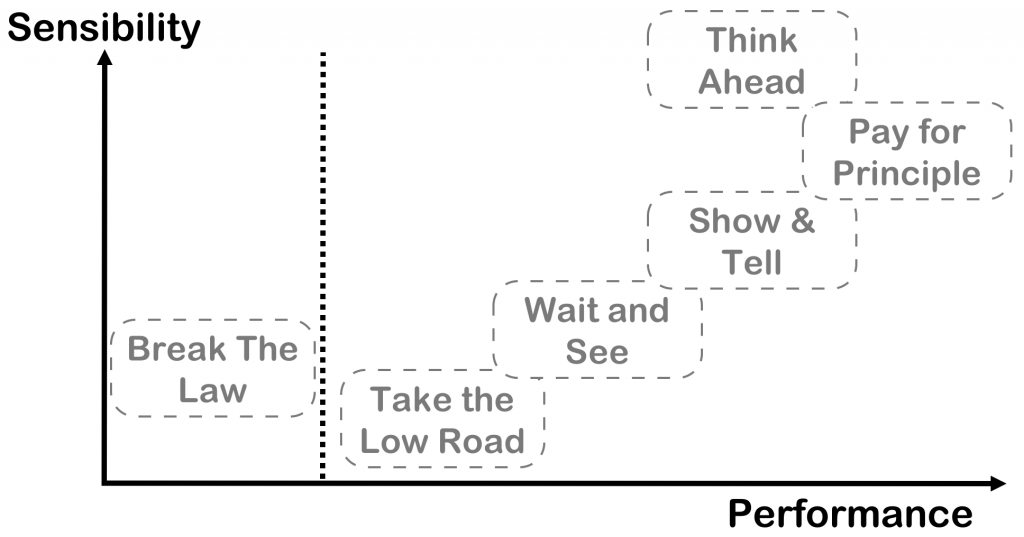Last week, I ran a web based session for IESE’s Alumni Association using a new, interactive format and found that our Alumni are moving quickly to make their firms more sustainability.
During the last year we have ran many webinars for our alumni and even the broader international business community. It has also been my privilege to attend other webinars on different topics during the last year. In general, they are a terrific way to communicate complex ideas to large numbers of people. If handled correctly, the moderator can bring in questions from the audience and make things relevant for as many people as possible.
The format, however, still makes it difficult to accomplish some of the most positive aspects of running a similar session in the face to face world. One of those is the opportunity for the people attending the conference to meet each other. The other is to give them an opportunity to talk about how the topic in question affects them personally or how their own organization is approaching it.
For this reason we decided to run the pilot program last week. The content we chose was my framework on looking at environmental sustainability from a strategic viewpoint that is outlined in my book Strategy & Sustainability as well as explained in some detail on my on line course with the same name.
Using a similar technique that we at IESE Business School us in some of our Custom Programs, after introducing my framework I broke the group into smaller zoom groups in which they could discuss the framework with each other. For this process, we had recruited nine former students to act as facilitators of the groups. These students came from all over the world and ranged from their early 30s to over 60. Some had done our full time MBA program while others were from one of our executive MBAs or our other management courses such as the Advanced Management Program.
Strategic Sustainability
If you are not familiar with the framework, I use two ideas to develop 6 possible approaches at the strategic level. One idea is what I call Environmental Sensibility, or the degree to which different stakeholders are asking an organization to pay attention to the issue. It is a combination of pressure that comes for the regulator, shareholders, employees, customers and even civil society as a whole. The other idea is to look at a firm’s performance on the different environmental indicators starting with the idea that compliance is about doing at least what the law requires.

I do not, by the way, encourage an organization to break the law but if we are realistic, there are companies which do just that with respect to environmental regulations. I do talk at length about the other five areas which range from simple compliance or what I call Take the Low Road to going much, much further.
Wait and See is the strategy to follow if the Board and Executive Committee do not believe there is much pressure from stakeholders yet. The point is that it may be a good idea to determine a firm’s carbon footprint and the lifecycle impact of its products and services in any case and carefully monitor the situation because it might change over time. Show and Tell is when a firm is taking action on many fronts and makes explicit reference in its communication strategy. This is different than greenwashing which is about making up a sustainability story which is not authentic or grounded in real projects, KPI’s and a commitment from Sr. Management.
Pay for Principle is the way I refer to a number of companies which have taken a leadership position on the environment as a result of the conviction of the shareholders. Such a position is not due to a calculated business case but because in the view of these people, it is the right thing to do. Think Ahead is, in my view, what we are increasingly seeing in large corporations that have announced bold initiatives for the future such as General Motors. The idea is that if the Board is convinced that sustainability will be key in 2030 or 2035, then it may make sense to begin to act now as these transformations will take time.
IESE’s Alumni Go Green
So after explaining the framework for about 20 minutes, we moved the people into small groups and then had our team of alumni volunteers draw arrows and circles on the chart above to indicate where the different alumni felt their companies were today and where they were going tomorrow. In the first place, there were many participants who felt that their organizations were already either pursuing Pay for Principle or Think Ahead. I found this to be very positive. What was even more exciting was that the overwhelming majority appeared to work at companies that were moving across the chart toward increased sensibility and increased performance.
So far the feedback we have received from the new format has been extremely positive. Our Alumni were not only able to learn something but also had a chance to talk with others about what it meant for them and their organization. We saw people exchanging emails on the chat and with luck, they are now in contact and discussing the best ways to move forward with each other.

